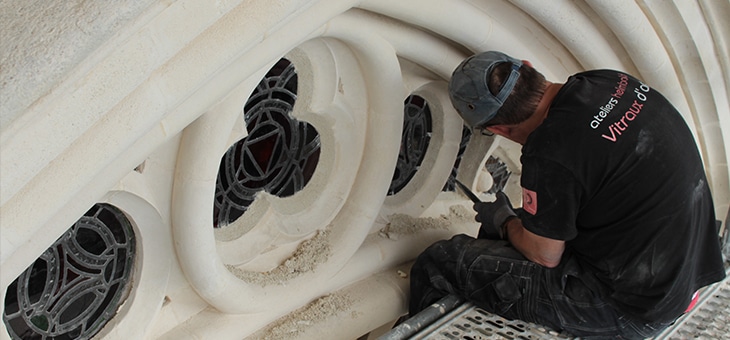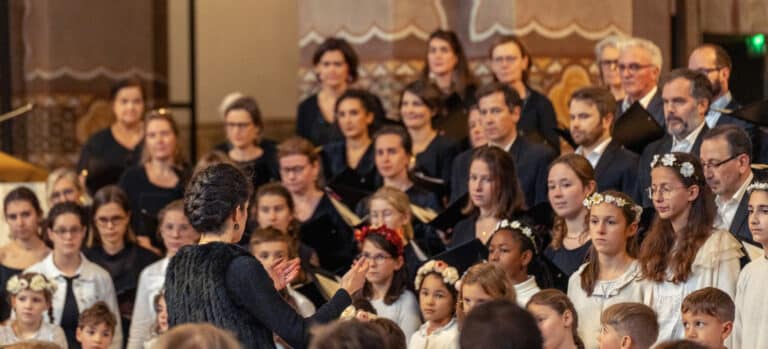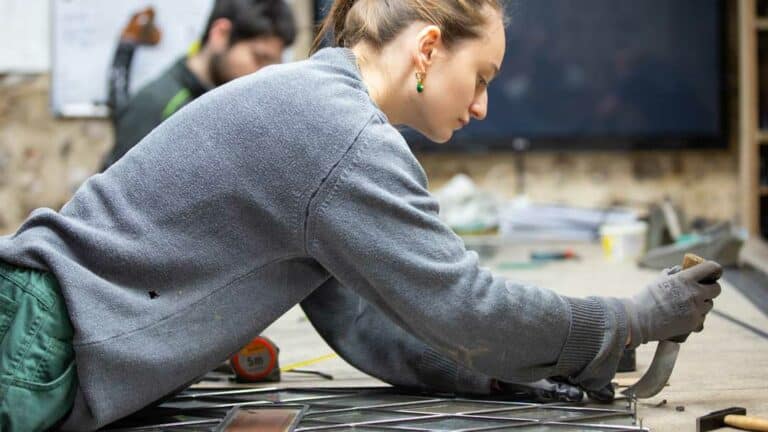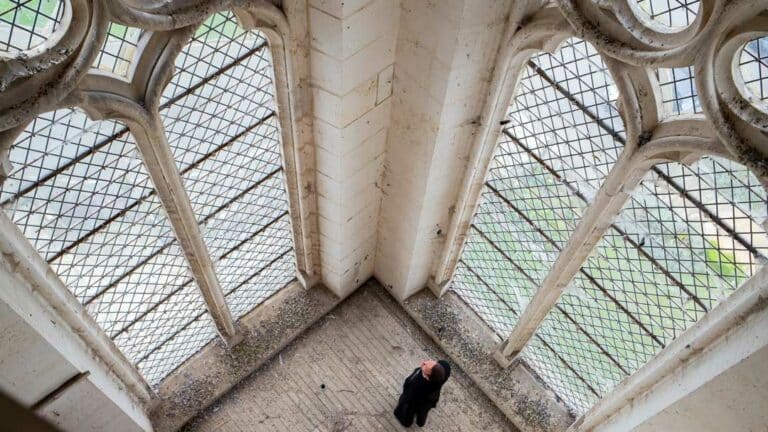Along with the continuation of the restoration works of the basilica, the stained-glass windows, which are over a century-old, are now on top of the checklist to undergo a delicate, meticulous renovation. We have met Henri Helmbold, founder of the family company Ateliers HELMBOLD, who have been tasked with the restoration of the stained-glass windows.
Things pan out in a great way
During a photo shooting on the progress of work on the basilica, we were lucky enough to bump into Henri Helmbold. An expert in stained glass, he runs a business employing 14 people just outside Rennes. He and his team are in charge of restoring the basilica’s stained-glass windows, a meticulous and time-consuming task…
A unique expertise
Mr. Helmbold has been working in the domain of stained-glass windows for nearly 50 years. He tells us about his expertise with passion. Indeed, stained-glass production is a traditional craft in both its making and completion, since the techniques used have hardly changed over the centuries. This occupation has kept all its nobility and authenticity, as no machine can be used. Only expert hands are the masters of the making.
An art subjected to strict rules
Each step is important, and their sequence in time too. Mr Helmbold explained them for us in greater detail. First of all, each stained-glass panel is removed, then transfered in the workshop to be washed and restored. After that, the ironworks allowing the fixture of the stained-glass panels, are changed and replaced by brass bars to allow longer durability. Once the panels have been removed and the ironwork changed, templates are made to allow the positioning of frames before each panel. Thus protected, they will be more apt to withstand the bad weather and the shocks caused by birds. To reinforce this device, lead flaps are created in order to air them and minimize wear and tear, mostly due to humidity. Those flaps are therefore a way to stop the problem. During that time, at the workshop, the stained-glass panels are washed in an acetone bath to loosen and remove the putty that may have remained under the lead, prior to rinsing them in demineralized water. Finally, the artistic stage starts with the applying of paints and patterns. Once finished, the panel is heated up to 650 degrees Celsius for optimal fixing.
A providential acquisition
Each era is hallmarked by its own characteristics. Often found in the fine arts, they are reflected in a number of domains, such as architecture, painting or the art of stained-glass making. Regarding the basilica of Notre-Dame de Montligeon, the stained-glass pieces were produced in the seventies. Nowaday they have become rare since they have no longer been produced for a number of years. The making and the restoration of stained-glass windows has also become rare, for new modern constructions hardly use them or even less and less. Therefore, they are in low demand and many companies have become bankrupt and forced to sell their stocks. The Helmbold company have been surviving up until now and were able to buy the stocks. Without even being aware of it, they purchased stained-glass pieces that would become useful much later for the renovation of the basilica! This was very lucky since they cannot be made anymore and cannot be reproduced identically. With this providential acquisition, the Shrine of Montligeon will certainly be able to extend its influence another century!




